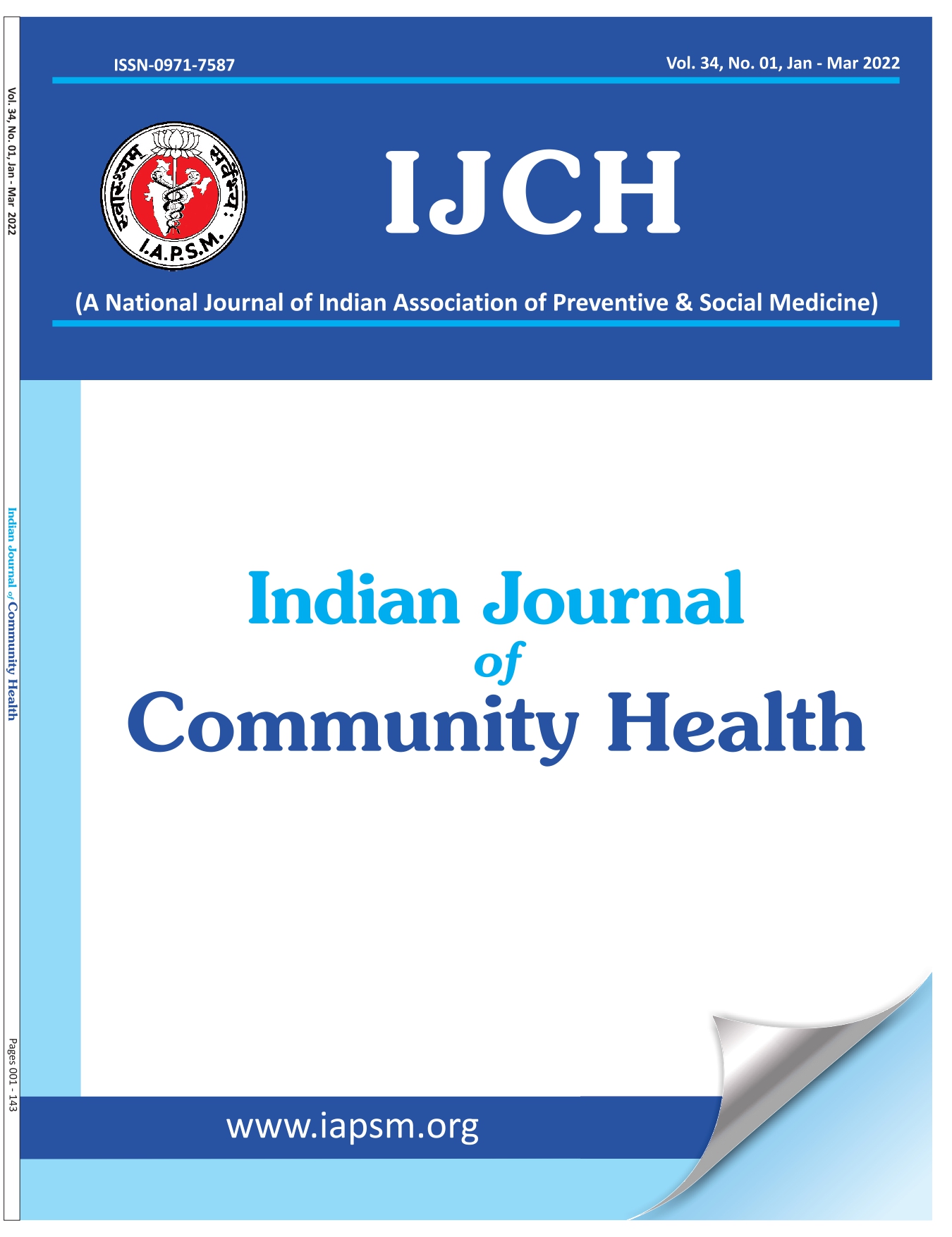The MILLET MISSION: The potential to combat non-communicable diseases and future research opportunities in India
DOI:
https://doi.org/10.47203/IJCH.2023.v35i02.021Keywords:
millet, superfood, nutritionAbstract
NCD Burden and the role of nutrition
Chronic diseases, often known as non-communicable diseases (NCDs), pose a significant threat to worldwide public health. As per World Health Organisation (WHO), NCDs account for 74% of all fatalities worldwide, with cardiovascular disease, cancer, respiratory disease, and diabetes being the leading causes.[1] Inadequate nutrition, including diets heavy in sugar, salt, saturated and trans fats, and deficient in fruits, vegetables, whole grains, and lean protein sources, is a significant risk factor for NCDs. The World Health Organization suggests a diet rich in fruits, vegetables, whole grains, nuts, and seeds and low in processed foods, sugar, saturated and trans fats.[2]
Downloads
References
Malekzadeh A, Michels K, Wolfman C, Anand N, Sturke
R. Strengthening research capacity in LMICs to address the global NCD burden. Glob Health Action. 2020 Dec 31;13(1):1846904.
Strengthening implementation of diet-related non-communicable disease prevention strategies in Fiji: a qualitative policy landscape analysis | Globalization and Health | Full Text [Internet]. [cited 2023 Mar 20]. Available from: https:// globalizationandhealth.biomedcentral.com/articles/10.1186/ s12992-022-00859-9
Challa HJ, Ameer MA, Uppaluri KR. DASH Diet To Stop Hypertension [Internet]. StatPearls [Internet]. StatPearls Publishing; 2022 [cited 2023 Mar 20]. Available from: https:// www.ncbi.nlm.nih.gov/books/NBK482514/
Bhattacharya S, Thakur JS. Implementation of Global NCD Monitoring Framework in Punjab, Haryana and Chandigarh–A Feasibility study. Indian Journal of Community Health. 2017;29(1):17–22.
Bhattacharya S, Bera OP, Saleem SM, Hossain MM, Varshney DS, Kaur R, et al. Dietary salt consumption pattern as an antecedent risk factor for hypertension: Status, vision, and future recommendations. Clinical Nutrition ESPEN. 2022;47:422–30.
Bhattacharya S, Singh A. “Taste Modification” - A New Strategy for Reduction of Salt Intake among Indian Population. Epidemiology International (ISSN: 2455-7048) [Internet]. 2016 Jul 31 [cited 2020 Jul 3];1(2). Available from: https://medical. adrpublications.in/index.php/Journal-EpidemInternational/article/view/788
Bhattacharya S, Thakur JS, Singh A. Knowledge attitude, and practice regarding dietary salt intake among urban slum population of North India. J Family Med Prim Care. 2018;7(3):526–30.
Bhattacharya S, Varshney S, Hossain MM, Saleem SM, Gupta P, Singh A. “Taste modification” strategy for prevention and control of hypertension in India: need for robust clinical trials. The Lancet Regional Health - Southeast Asia [Internet]. 2023 Jul 1 [cited 2023 Jun 12];14. Available from: https:// www.thelancet.com/journals/lansea/article/PIIS2772- 3682(23)00066-5/fulltext
Bhattacharya S, Bera OP, Shah V. Consumers’ Perception About Front of Package Food Labels (FOPL) in India: A Survey of 14 States. Front Public Health. 2022;10:936802. Published 2022 Jul 15. doi:10.3389/fpubh.2022.936802
Nutritional and functional roles of millets-A review - PubMed [Internet]. [cited 2023 Mar 20]. Available from: https:// pubmed.ncbi.nlm.nih.gov/31353706/
Anitha S, Botha R, Kane-Potaka J,Givens DI, Rajendran A, Tsusaka TW and Bhandari RK (2021) Can Millet Consumption Help Manage Hyperlipidemia and Obesity?: A Systematic Review and Meta-Analysis. Front. Nutr. 8:700778. doi:10.3389/fnut.2021.700778
Effect of brown rice, white rice, and brown rice with legumes on blood glucose and insulin responses in overweight Asian Indians: a randomized controlled trial - PubMed [Internet]. [cited 2023 Mar 20]. Available from: https://pubmed.ncbi.nlm. nih.gov/24447043/
Millet Grains: Nutritional Quality, Processing, and Potential Health Benefits - Saleh - 2013 - Comprehensive Reviews in Food Science and Food Safety - Wiley Online Library [Internet]. [cited 2023 Mar 20]. Available from: https://ift. onlinelibrary.wiley.com/doi/abs/10.1111/1541-4337.12012
Ojo O, Ojo OO, Adebowale F, Wang XH. The Effect of Dietary Glycaemic Index on Glycaemia in Patients with Type 2 Diabetes: A Systematic Review and Meta-Analysis of Randomized Controlled Trials. Nutrients. 2018;10(3):373.
Gupta RK, Gangoliya SS, Singh NK. Reduction of phytic acid and enhancement of bioavailable micronutrients in food grains. J Food Sci Technol. 2015;52(2):676–84.
Biofortification in Millets: A Sustainable Approach for Nutritional Security - PubMed [Internet]. [cited 2023 Mar 20]. Available from: https://pubmed.ncbi.nlm.nih.gov/28167953/
Millets 2023 | MyGov.in [Internet]. [cited 2023 Mar 20]. Available from: https://www.mygov.in/campaigns/millets/
Downloads
Published
How to Cite
License
Copyright (c) 2023 Vanisree Ramanathan Ramanathan, Shailesh Tripathi, Sudip Bhattacharya, G Jahnavi, Pratima Gupta, Saurabh Varshney

This work is licensed under a Creative Commons Attribution-NonCommercial-NoDerivatives 4.0 International License.





